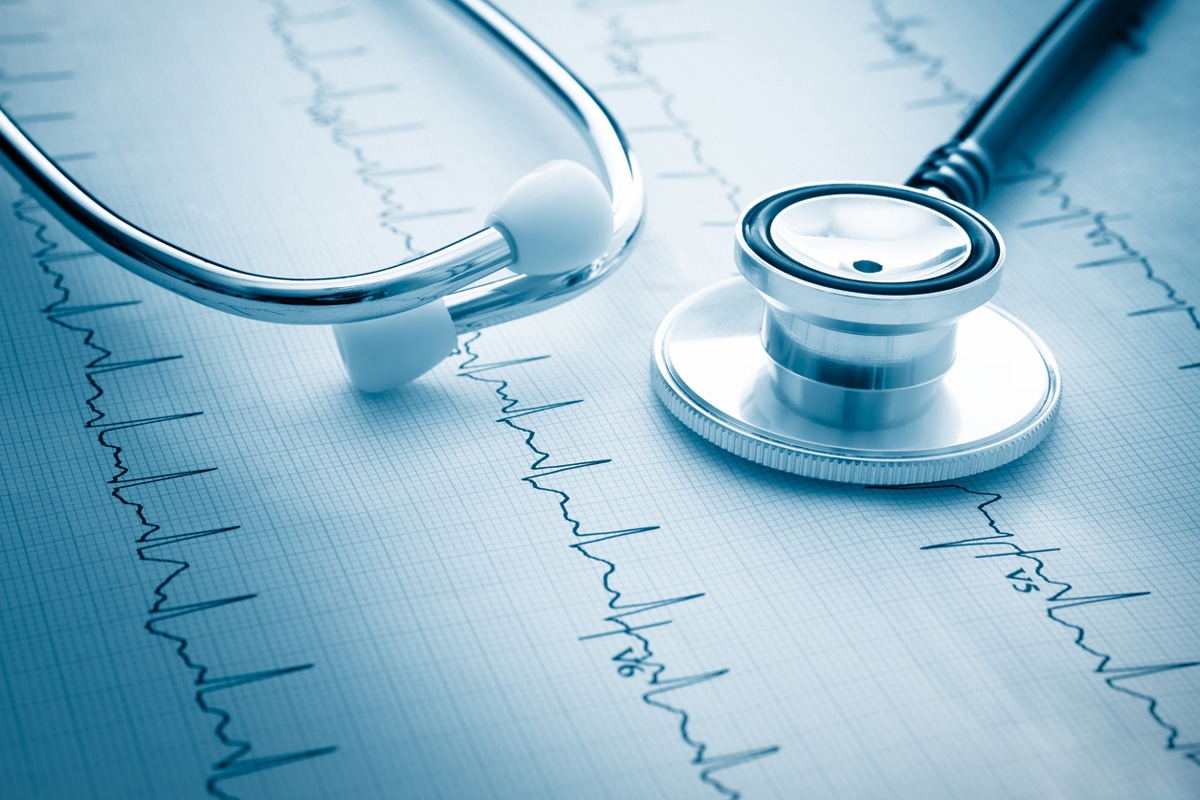
What is angina?
What is angina?
Key takeaways
4 min read
- Angina is a type of chest pain or discomfort. Angina happens when your heart isn’t getting enough oxygen-rich blood.
- The most common cause of angina is coronary heart disease. Coronary heart disease is a condition where plaque builds up in your coronary arteries. This limits blood flow to your heart muscle.
- If you have angina symptoms that are severe, getting worse, or last for more than 10 minutes, call Triple Zero (000).
What causes angina?
Coronary heart disease is the most common cause of angina and heart attacks.
Like any muscle, the heart needs its own blood supply. The blood vessels that supply blood
to the heart are called coronary arteries. These arteries sit on the heart’s surface.
Coronary heart disease is where fatty material called plaque builds up inside the coronary arteries. Plaque is made of fat, cholesterol and other substances. Plaque can limit the flow of oxygen-rich blood to the heart muscle. This can cause angina or a heart attack.
What does angina feel like?
Angina can feel like:
- pain, pressure, heaviness, tightness or squeezing in your chest
- pain or discomfort in your neck, jaw, arms, shoulders or back
- a feeling like indigestion (heart burn).
You might have other symptoms like shortness of breath, nausea/vomiting, and fatigue.
Symptoms can vary from mild to severe. They can last from seconds to minutes. Angina can also stop and start.
You might notice symptoms when your heart is working hard, like during exercise or if you are stressed. This is because your heart needs more oxygen-rich blood than when you are resting.
What should you do if you have angina?
If you have angina, follow the steps below.
- Stop and rest.
- Take your angina medicine (if you have it).
- If rest doesn’t relieve your symptoms, take one dose of your angina medicine.
- Sit or lie down before taking your medicine, because it can make you dizzy.
- Take your usual dose of angina medicine (spray or tablet under the tongue).
- Wait five minutes. If the angina continues, take another dose of medicine.
- Wait another five minutes.
- Call Triple Zero (000) if your symptoms:
- are not fully gone within 10 minutes OR
- are severe OR
- are getting worse.
Download a copy of the ‘My angina and heart attack action plan’. Take it to your next doctor’s appointment for them to complete.
What are the risk factors for angina?
Angina and heart attacks are usually caused by coronary heart disease. There are several risk factors for coronary heart disease. There are some you can change, and some that you can’t. Focus on the things you can change. Learn more about risk factors for heart disease and the heart-healthy changes you can make.
Risk factors you can change:
- High blood pressure
- High cholesterol
- Diabetes
- Unhealthy diet
- Being physically inactive
- Being overweight or obese
- Smoking and/or vaping
- Drinking too much alcohol
Risk factors you can't change:
- Family history of premature coronary heart disease
- Getting older
- Being male
- Being post-menopausal
- Cultural background – people of certain cultural backgrounds, including First Nations peoples, have increased risk of coronary heart disease.
Is angina the same as a heart attack?
No, angina is not the same as a heart attack.
Unlike a heart attack, angina doesn’t cause permanent damage to the heart muscle. The pain often goes away with rest or angina medicines. This is known as ‘stable angina’.
If you experience angina when you’re resting, this is a sign that your coronary heart disease might be getting worse. This is known as ‘unstable angina’. Let your doctor know so they can arrange tests or treatment.
How is angina diagnosed?
To diagnose angina, your doctor will ask about your symptoms, your risk factors and medical history and family history. They will also do a physical examination.
Your doctor will arrange some tests to investigate the cause of your chest pain or discomfort. These tests might include:
- blood tests. Your doctor will want to check your cholesterol levels, blood sugar levels and other markers of heart health.
- electrocardiogram (ECG). This test looks at your heart’s electrical signals to help diagnose some heart conditions. Certain findings on an ECG can indicate you may have angina.
- exercise stress test. This test helps your doctor understand how well your heart works when under stress. It generally involves having an ECG while riding an exercise bike or walking on a treadmill. The findings can help diagnose angina.
Your doctor might also refer you for other tests:
- coronary angiogram or CT coronary angiogram – a type of imaging test that can show blockages in your coronary arteries.
- cardiac MRI – an MRI scan of your heart that can show if there is damage caused by coronary heart disease.
Read more about medical tests for heart disease.
How is angina treated?
Treatment for angina focuses on two goals:
- managing your symptoms
- reducing your risk of a heart attack.
Treatment for angina generally includes heart-healthy changes and angina medicines. Some people might also need a procedure to restore blood flow to their heart.
Heart-healthy changes
Healthy habits can help prevent future episodes of angina and can help to reduce the risk of a heart attack. Healthy changes include:
- following a heart-healthy eating pattern
- being more physically active
- achieving and maintaining a healthy weight
- not smoking or vaping
- cutting down on alcohol
- finding healthy ways to manage stress.
Find out more about making heart-healthy changes.
Angina medicines
Angina medicines increase blood flow to your heart. These medicines are commonly called ‘nitrate medicines’. They come in short and long-acting forms.
- Short-acting nitrate medicines are taken during an angina episode. They come in the form of a tablet or spray that goes under the tongue. If you are prescribed this type of medicine, be sure to always keep it handy.
- Long-acting nitrate medicines are taken every day to prevent angina, in the form of a tablet or patch.
Your doctor might prescribe other medicines to reduce your risk of a heart attack or other complications. These medicines include blood pressure medicines and cholesterol-lowering medicines.
Find out more about heart medicines.
Procedures
Your doctor may recommend a procedure depending on how severe your coronary heart disease is. These procedures increase blood flow to your heart. There are two main types:
- Percutaneous coronary intervention. A procedure to improve blood flow to your heart by opening the coronary arteries using a small balloon. Sometimes a stent is inserted at the same time to stop a blockage happening again.
- Coronary artery bypass graft (CABG). This is a type of open-heart surgery. Your doctor takes a healthy blood vessel from somewhere else in your body (chest, leg or arm). They attach the healthy blood vessel above and below the blocked part of the artery. This allows blood to go around (bypass) the blockage.
Find out more about heart procedures and devices.
Living well with angina
You can live a long and active life with angina with healthy changes and medicines. Other supports can include cardiac rehabilitation and the Heart Foundation’s MyHeart MyLife support program.
Cardiac rehabilitation
Cardiac rehabilitation is a program of support, exercise and education about heart health. The goal is to keep you feeling well and out of hospital. You can do cardiac rehabilitation in-person or online. There are also options to participate in a group. Speak to your doctor for more information.
Visit the Cardiac Services Directory to find a cardiac rehabilitation program near you.
MyHeart MyLife support program
MyHeart MyLife is the Heart Foundation’s free digital support program for people living with heart disease and those who care for them. The program will help you understand how to best manage your condition for a healthier, happier life.
Find out more about MyHeart MyLife.
References
- Australian Medicines Handbook. Cardiovascular drugs. 2024. Accessed 6 Jan 2025. https://amhonline.amh.net.au/
- Brieger D, Cullen L, Briffa T et al. National Heart Foundation of Australia & Cardiac Society of Australia and New Zealand. Australian clinical guideline for diagnosing and managing acute coronary syndromes 2024. (In draft).
- Gulati M, Levy PD, Mukherjee D et al. 2021 AHA/ACC/ASE/CHEST/SAEM/SCCT/SCMR Guideline for the Evaluation and Diagnosis of Chest Pain: A Report of the American College of Cardiology/American Heart Association Joint Committee on Clinical Practice Guidelines. Circulation. 2021;144(22):e368-e454. doi: 10.1161/CIR.0000000000001029
You might also be interested in...

5 warning signs of a heart attack that you may not know
Just as no two hearts beat the same, no two heart attacks are the same, even for the same person. It is different for everyone and the warning signs someone experiences before a heart attack can vary drastically from person to person.

Get started with more physical activity
Finding time for physical activity and exercise is one of the best things you can do for your heart.

Nutrition and living with heart disease
Information on healthy eating, with a focus on key highlights for people who have heart diseases. This includes people who have had a heart attack, along with heart disease risk factors (high cholesterol, high blood pressure).
Last updated29 April 2025
Last reviewed29 April 2025